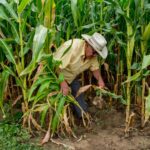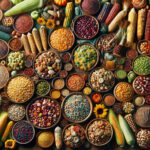Corn, a fundamental pillar of agriculture in America and globally, exhibits a well-defined life cycle with phenological stages crucial for its development and production. Understanding these phases allows farmers to implement precise management strategies and maximize the potential of their harvests. Join us on this detailed journey through each phenological stage of corn cultivation.
Breaking Down the Corn Life Cycle
Germination and Emergence: The Beginning of Cultivation
The corn adventure begins with germination, a process that is activated when the seed absorbs the necessary moisture from the soil. Emergence marks the appearance of the coleoptile, the protective structure that encloses the first leaf, breaking through the soil surface. This initial stage is of vital importance, as unfavorable conditions can compromise the uniformity and vigor of the crop from its beginnings.
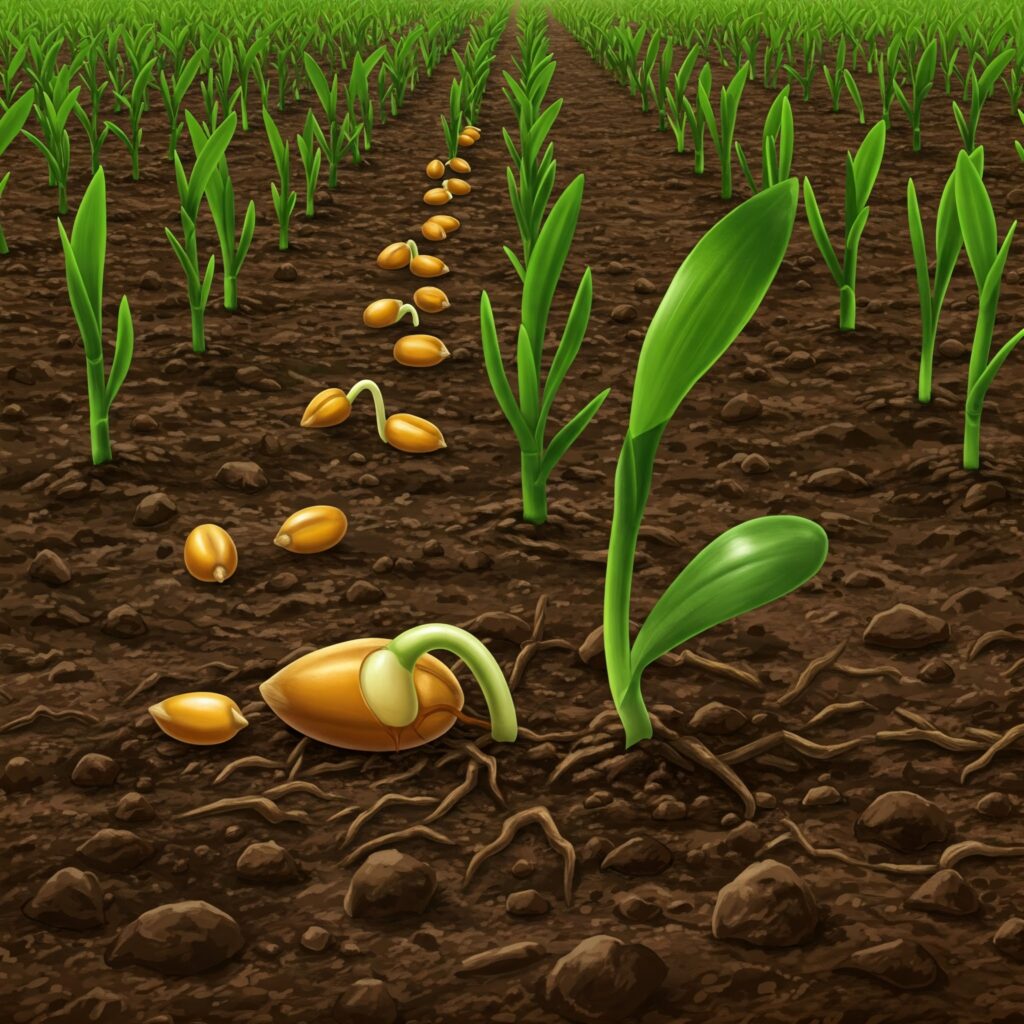
Establishment and Vegetative Growth: Plant Development
Once the seedling emerges, the corn enters a vegetative growth phase where its root system is established and it begins to develop in height. During this period, adequate nutrition and irrigation management are essential to ensure healthy and robust growth. The vegetative phase extends until the plant reaches physiological maturity and the formation of reproductive structures, the future ears, begins.
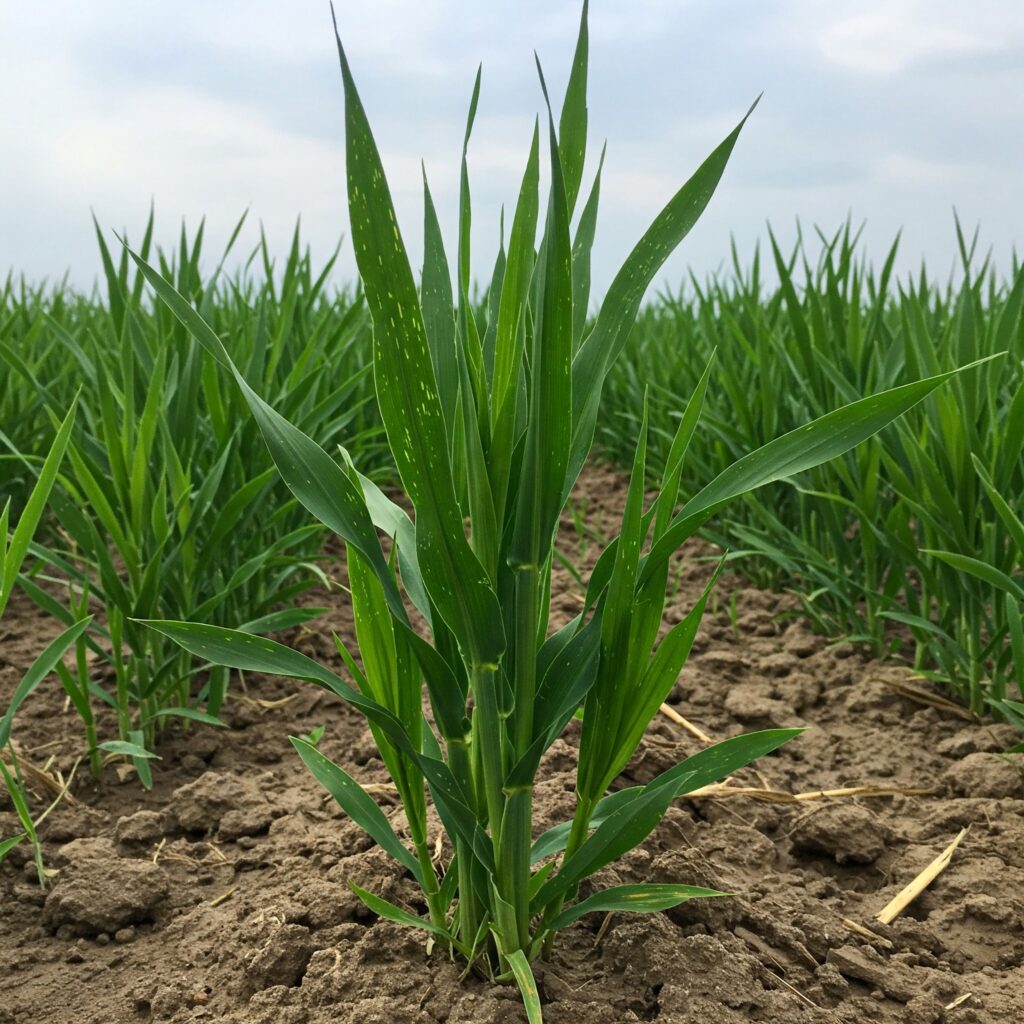
Flowering and Pollination: The Key Reproductive Moment
Flowering in corn is a synchronized event involving the appearance of the male flower (tassel) at the apex of the plant and the female inflorescence (ear) developing in the leaf axils. Pollination, the process of transferring pollen from the tassel to the silks of the ear, is essential for the fertilization of the ovules and the subsequent formation of the kernels. This process is highly dependent on climatic conditions, especially temperature and humidity.
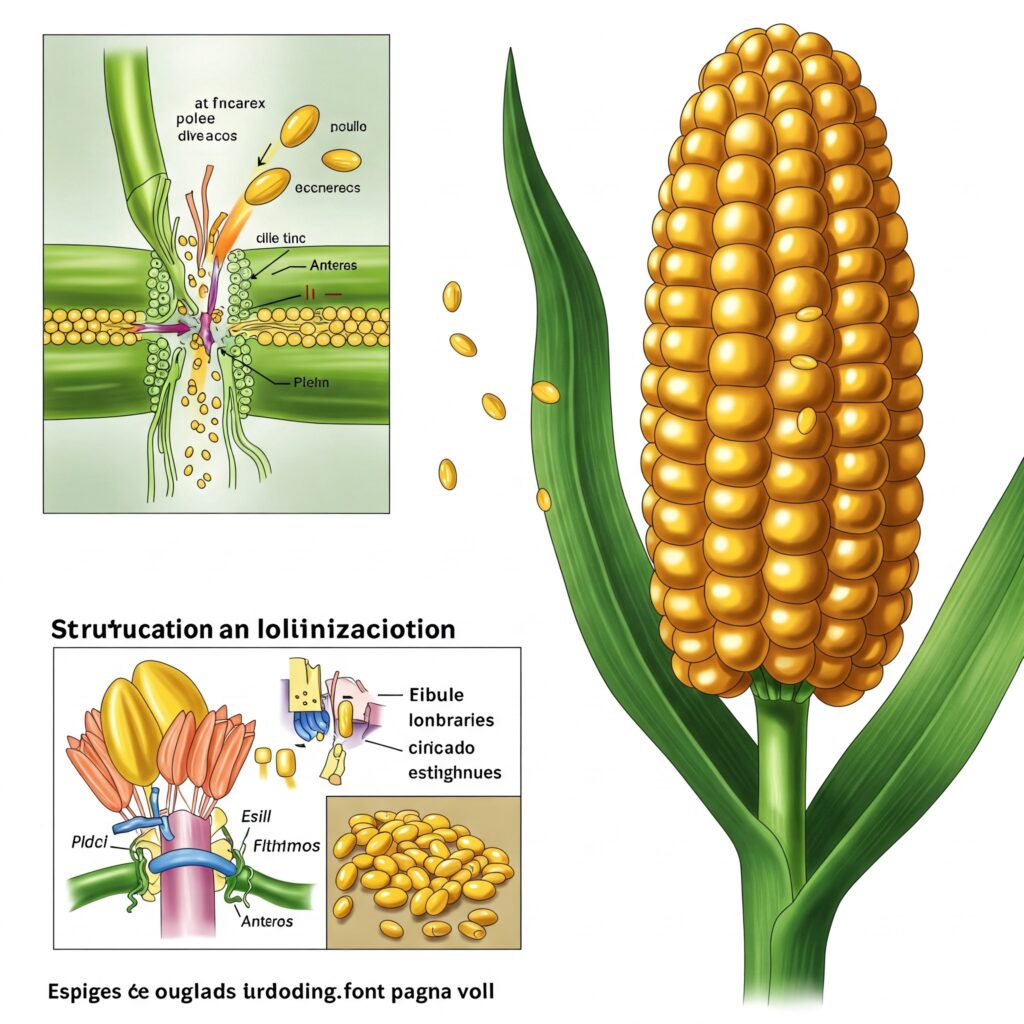
Grain Development and Maturation: The Formation of Yield
After successful pollination, the grain development stage begins. This phase is characterized by kernel filling, where carbohydrates, mainly starch, and proteins accumulate in the endosperm. Physiological maturity is reached when the kernel has accumulated its maximum dry matter content, indicating that it is ready for harvest.
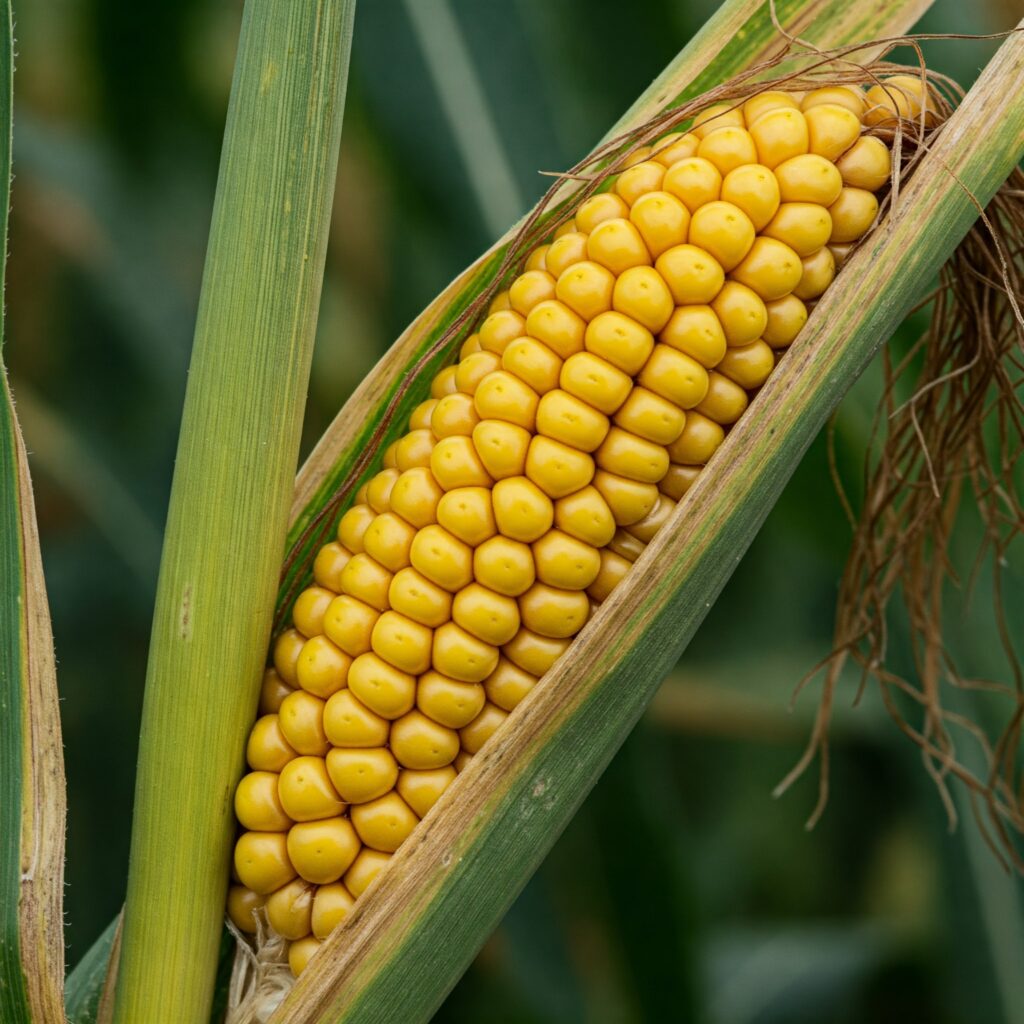
Harvest: The Culmination of the Cycle
The final stage of the corn life cycle is harvest, which is carried out when the kernels have reached optimal maturity for the desired purpose (dry grain, silage, etc.). Determining the precise harvest time is crucial to maximize yield and minimize losses due to shattering or damage.
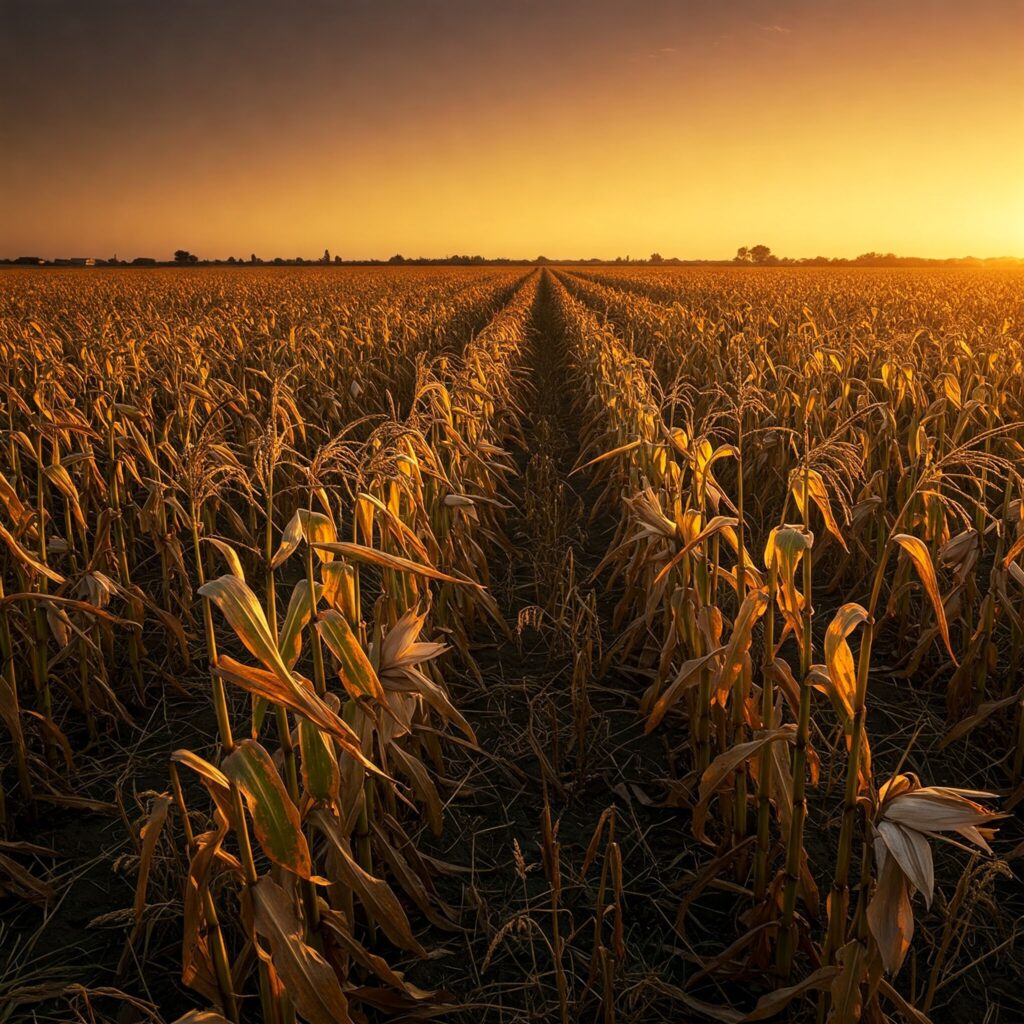
Conclusion
A thorough understanding of the phenological stages of corn is essential for implementing effective agricultural practices tailored to the specific needs of the crop at each phase of its development. From planting to harvest, each stage demands particular attention and management to ensure successful and sustainable corn production.
Nutrient recommendations for corn cultivation
To optimize corn cultivation at each phenological stage, it is essential to start with a comprehensive soil analysis to determine the specific nutrient needs before planting, incorporating a balanced dose of nitrogen, phosphorus, potassium, calcium, and magnesium, in addition to micronutrients according to identified deficiencies. During germination and emergence, ensuring adequate moisture is crucial, and a light application of nitrogen, phosphorus, and potassium can favor initial development. In the vegetative development phases, split fertilization of nitrogen and potassium is recommended to accompany the rapid growth of the plant, along with continuous applications of phosphorus and secondary nutrients. During flowering and grain formation, increasing the dose of nitrogen and potassium is vital for proper filling, and the addition of calcium and boron can improve pollination and fruit development. Finally, during grain filling and maturation, maintaining an adequate supply of nitrogen and potassium, along with phosphorus, will contribute to the quality and final yield of the harvest. It is important to remember that these are general recommendations and that periodic soil and foliar analyses are essential to adjust nutrient doses accurately, always following local regulations and the guidance of agricultural professionals.
Keywords: Corn phenological stages, corn germination, corn vegetative growth, corn flowering, corn pollination, corn grain development, corn maturation, corn harvest, corn agronomic management, corn nutrition.
 AgronoBlog – Agriculture Blog
AgronoBlog – Agriculture Blog 